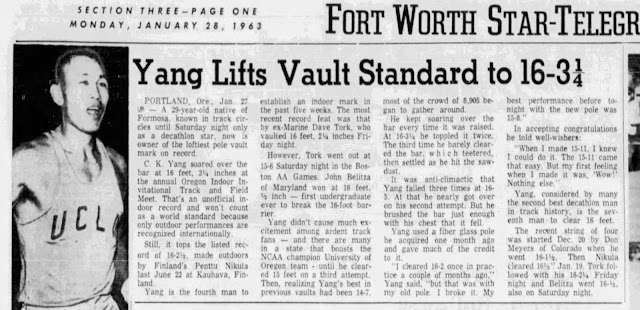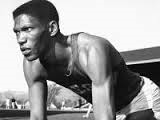This week I was almost intrigued by the promotion of the meet called Athlos, in the old Randall's Island stadium now called the Icahn Stadium in NYC. However I wasn't intrigued enough to remember to watch it. Gettin' old, I guess. But I did read about it and wondered how someone dreamed up this promotion. Personally I'm on burn out after the Olympics and Diamond League wrap ups. This concept of sharing a waning sportlight with Megan Thee Stallion or whomever to draw in the non-track fans reminds me of TV shows like Dancing With The Stars or The Masked Singer or America's Got Talent. Throw in some B celebrity, add a bit of pizazz with fireworks and try to get athletes already well on the downward slope after a hard season of competition to race for money. That's probably the answer, money. If the sponsor had thrown in a million dollars or so for a world record performance and scheduled the meet a week or two before or after the Paris Olympics, it might have gotten some traction with me. Consider when some kids in college can do much better on the current NIL revenues than world class athletes could do at Athlos ($60,000 for a win). In comparison, players in the WNBA receive an average annual pay of $119,590 or ($2,989.75/game in a forty game season) with the highest-earning players in the WNBA receiving around $252,000 or $6,250/game. Men in the NBA have a minimum salary of $1,157,153 for an 82 game season or an average of $14,111.62 per game. The median NBA salary is a wopping $6,696,429.00. You're right, women's sport pay sucks, but in track and field, men's pay sucks equally. A noble effort by the Athlos organizers, but they were working with a tired product at a time when football, Major League Baseball, and even cross country might be of more interest to a lot of the the track and field public. My mistake, they were going after people who had little or no knowledge in the sport by promoting it with Megan T S. You're right again, the Super Bowl at half time does that too. Maybe they could have gotten Snoop Dog going against Jay Zee in a pole vault competition or better still Sean Diddy Combs against R. Kelly both out on recognisance bonds for a go at a broad jump.
This also reminds me of some past attempts to promote the sport in a somewhat unconventional way linked to other activities. In 1954 in Toronto, Canada, an organization supporting track and field for young athletes held a training camp and brought in some American coaching talent including Fred Wilt, Ken Doherty, and Brutus Hamilton to conduct a clinic. In conjunction a track meet was put on at the Canadian National Exposition grounds while a circus was camped in the infield for a performance later that evening.
Several well known athletes were brought in to run some exhibition races. Among them was Wes Santee there to race a mile. Indeed it was special. When the gun went off several elephants got excited and bolted from their handlers. As Wes was rounding the last turn of the race he found the elephants blocking his path and had to run around them. He won the race in a pedestrian 4:25 obviously not going all out, or perhaps he stepped in something. After this elephantine performance Wes came back in an equally slow 880 in 1:58. Sort like the old saying of 'all of a sudden there was a piano or an elephant on his back'.
Another event that I recall where Track and Field was promoted on television in the 1950's
was a decathlon dual mano a mano between Rev. Bob Richards the 1952 and 1956 Olympic
pole vault champ and Bob Mathias the 1948 and 1952 Olympic decathlon champion.
Richards was also a noted decathlete, so the event was somewhat evenly matched, although
Mathias may have had to come out of retirement. I recall that the meet was televised and
held indoors at the Naval Academy. Correct me if I'm wrong on this as I have not been able
to find a report on the event. I do recall that Richards won the 1500 meters and the decathlon.
The whole thing was a promotion by one of the major TV networks possibly with a Wheaties
sponsorship.
I've never promoted a track meet but I have some ideas in case you are wondering.
This link will give you a hint of what I have in mind for an opening 'act'.
https://youtu.be/l3w4I-KElxQ We would try to arrange for elephants on this one as they did
in Toronto. That was 70 years ago. Some of those elephants might still be alive and living in
nursing homes. The Italians took this event a step or two further in Verona. Check this out
as well as the first violinst.
But couldn't you see Noah Lyles being inspired to come out in a tunic and 'perform' in
an event like this? The athletic ballet dancers in the second show leave little to the
imagination.
I rest my case.
George Brose
.George, George, George,




























